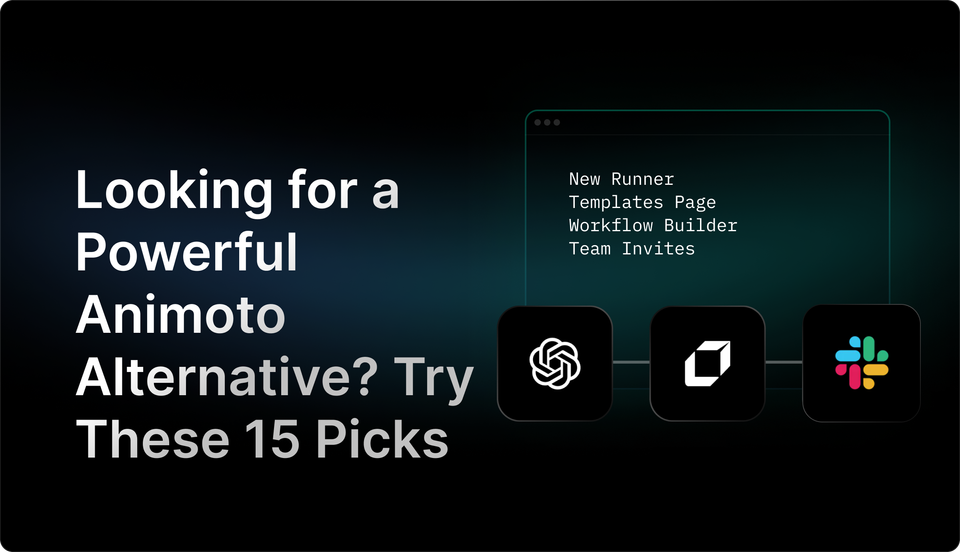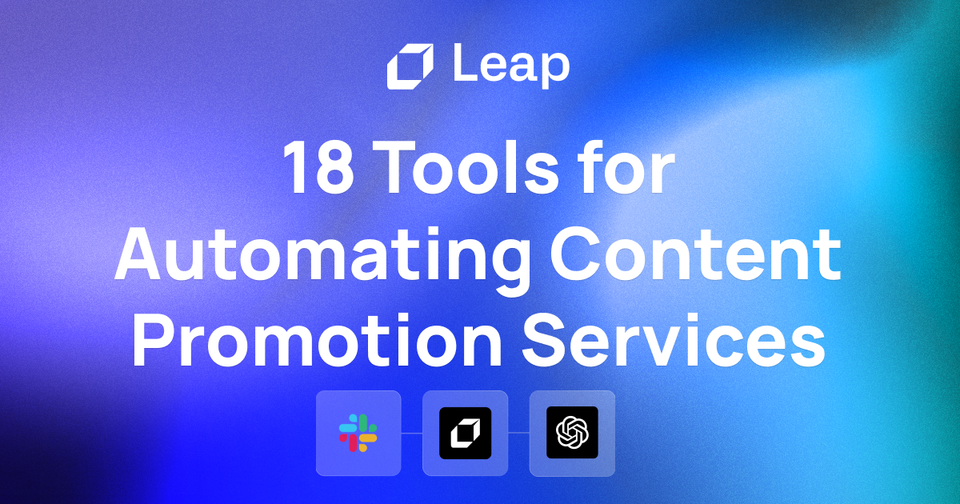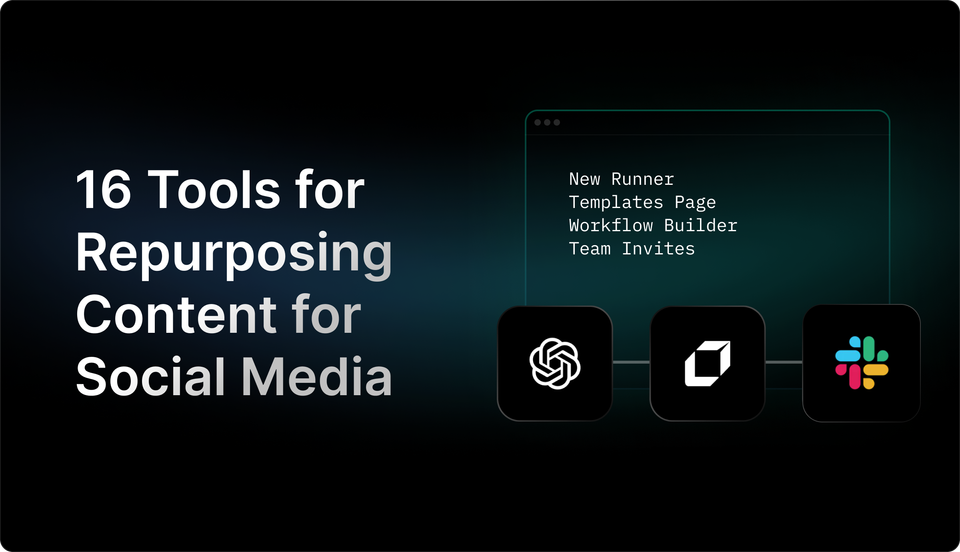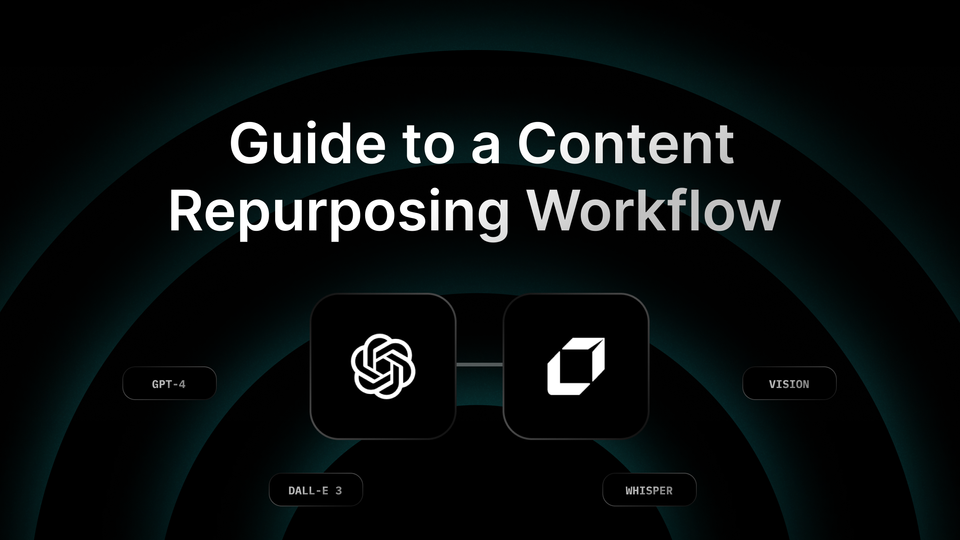41 Content Distribution Platforms to Amplify Your Reach
Want to extend the reach of your content? Explore these content distribution platforms that can help you reach new audiences and drive more traffic.
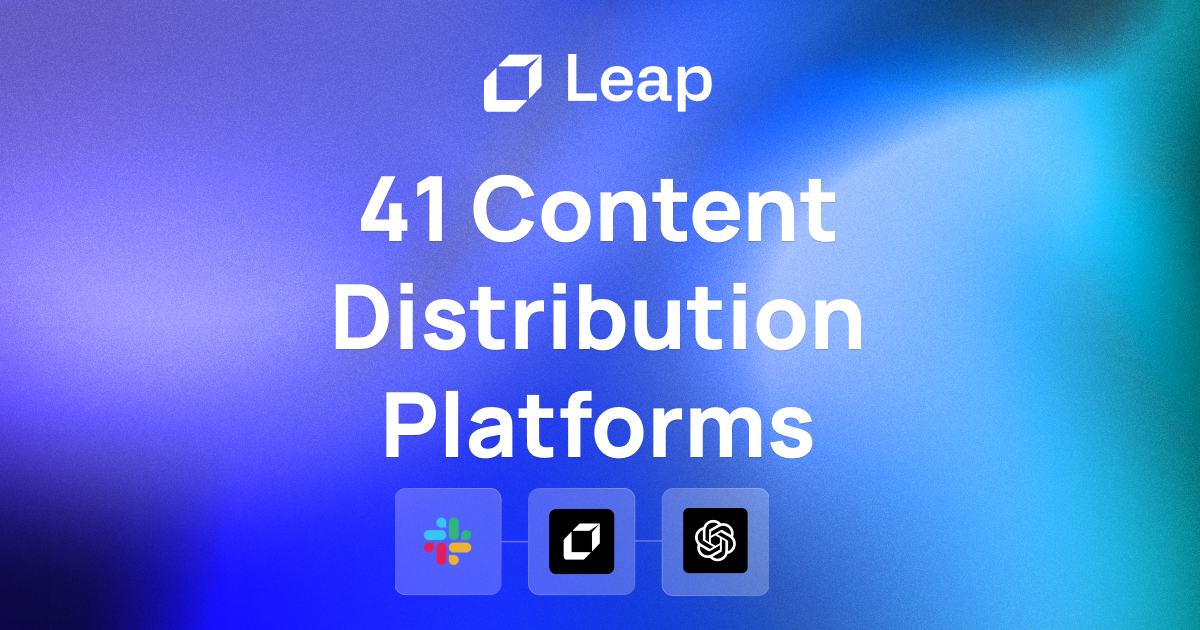
Do you want to improve the visibility of your content? Content distribution platforms are designed to help you reach a wider audience on multiple channels. If you are a content creator, blogger, or business owner, these platforms offer an effective way to distribute your content and reach a larger audience. The best part? They do all the heavy lifting, allowing you to focus on creating and managing your content. Ready to learn more about content distribution platforms? Let's dive in!

What Is Content Distribution Platform?

Content distribution platforms are dynamic ecosystems that amplify your content’s voice in the crowded digital marketplace. Another way to think of distribution channels is as the highways that connect your content with its audience.
Content distribution happens in one of three ways:
- Owned
- Earned
- Paid
Owned Channels
Owned channels are the content properties your company owns. Earned channels are when third parties promote or share your content, and paid channels are when your company pays to distribute your content on specific channels. Owned channels include your website, blog, social media profiles, email newsletter, or mobile publishing app.
Earned Channels
Earned channels are when third parties promote or share your content. These third parties could include customers, journalists, bloggers, and anyone who shares your content for free — hence the name “earned.”
Paid Channels
Paid channels are when your company pays to distribute your content on specific channels. This includes pay-per-click (PPC), paid social advertisements, and paid influencer content.
Content Distribution Platforms Importance
Without distribution, your carefully crafted words and ideas risk fading into the vastness of the internet, unheard and unseen — so distribution makes the difference between ‘great content’ and ‘great content that actually gets seen.’
Content Distribution Platforms Importance
Without distribution, your carefully crafted words and ideas risk fading into the vastness of the internet, unheard and unseen — so distribution makes the difference between ‘great content’ and ‘great content that actually gets seen.’

Top 6 Benefits of Using a Content Distribution Platform

Digital content distribution platforms offer a multitude of advantages that can significantly impact the success of a marketing strategy
1. Ability to increase reach and engagement
Leveraging various channels such as social media platforms, blogs, and video sharing platforms, businesses can access a broader audience, increase engagement with their brand, and drive more website traffic. This, in turn, can lead to higher conversion rates and a better return on investment.
2. Targeted marketing
Through content distribution platforms, businesses can tailor their content to specific audiences based on demographics, interests, and behaviors. This targeted approach ensures that the right message reaches the right people at the right time, resulting in more effective marketing campaigns.
3. Improved accessibility and convenience
By making content readily available across multiple channels, businesses can ensure that their audience can access it at any time and from anywhere. This accessibility is particularly valuable for global businesses or those targeting audiences that are constantly on-the-go.
4. Offer better Return on Investment (ROI)
Enabling businesses to target specific audiences that are more likely to convert. This precise targeting helps maximize the impact of marketing efforts and generate a higher ROI.
Content distribution platforms provide measurable results by allowing businesses to track and analyze the performance of their content
5. Leveraging analytics and tracking tools
Companies can gain valuable insights into the effectiveness of their marketing strategies and make data-driven decisions to optimize their content distribution.
6. Content distribution platforms are cost-effective
Eliminating the need for expensive printing and distribution costs associated with traditional marketing methods. This cost efficiency allows businesses to stay within budget while reaching a wider audience and achieving their marketing objectives.
Related Reading
- Content Promotion
- Content Repurposing
- Content Distribution Strategy
- Content Promotion Strategies
- How To Repurpose Content
41 Best Content Distribution Platforms To Know About

1. Leap AI
Leap helps you to automate your work with the power of AI. Partnered with Zapier, Vercel, and more, Leap enables you to supercharge your work by allowing you to create custom AI automations. Create sophisticated AI automations with no-code. Connect the tools you love with best-in-class AI text, image, and audio models.
Supercharge your existing tools with seamless AI integrations to OpenAI, Microsoft, and more. From summarizing documents, to voice translation, to AI call transcription, to AI avatar and asset generation, to SEO automation, to even automating the cold email creation and sending process, automate anything with Leap Workflows. The opportunities for automation are endless with Leap workflows.
Try Leap’s AI Workflows tool for free today.
2. Buffer
Buffer is one of the best content distribution tools that provide the simplest means to share content on social media platforms such as Facebook, Instagram, LinkedIn, Twitter, etc. All it takes is one click to accomplish the task. What’s more, you have the liberty to have your content queued and scheduled to appear at specific times. Adding images or videos makes your old content look new, and gives Buffer a fresh lease of life. You can do this right from the Buffer dashboard. You can measure your metrics using Buffer analytics and tweak your campaigns when needed.
3. MeetEdgar
Who would want to discard all their previously published social media posts? Most certainly not you if you can help it. That’s where MeetEdgar comes into the picture and makes it easy to repost archived content on all social media platforms. An efficient web content distribution platform, MeetEdgar, is quick and easy.
It comes to your aid when your team is running short on content. It not only helps you save precious time you would have spent on creating new content, but it also ensures your continued presence on social media, which is essential to remain fresh in the minds of your target audiences. You can even schedule posts for upload with this tool.
4. WiseStamp
If your business demands that you write more messages, WiseStamp is one of the best content distribution tools for the job. Besides sharing your information, you can also share your social media account details and email signature. You can leave a call to action (CTA) button as a link to your Twitter handle. You can have CTAs at the end of your blog posts and link them via RSS feeds.
5. Goodbits
Goodbits is another content distribution tool that lets you share your content with your target audience via email newsletters. You can leverage the long hours spent on content creation by automating content from RSS feeds, Twitter, and all the content posted on Pocket, Slack, and the ubiquitous Facebook. You can easily collect content, and you’ll love the drag-and-drop editor that lets you manually collect information. You can also customize your mailing list when using Good bits.
6. MailChimp
For easy and successful management of email campaigns, almost all marketers use the automated content distribution services offered by Mailchimp. Mailchimp lets you manage your subscribers and helps send email newsletters to every user in your contact list. What’s more, you can track and monitor the results of your campaign using this content distribution channel.
You can use it to automate and distribute all your new posts. And you can rely on your analytics reports to track all emails sent as part of a campaign and apply the data to enhance your future campaigns. Mailchimp is the leading brand in email distribution and an essential tool for content distribution, especially automated email campaigns.
7. SumoMe
SumoMe is a WordPress plugin with several tools that come in handy for distributing earned and owned media. SumoMe has excellent content distribution tools for owned media, such as giveaway widgets and a sign-up bar, which helps create your email lists.
For earned media, there is a tool known as “Share,” which helps track users responding to your ads and helps redistribute your content through more than a dozen social media networks. SumoMe also features heat maps to keep track of the clicks made by visitors and is great for placing a CTA at strategic points in your content.
8. Constant Contact
As the name signifies, this content distribution tool helps you remain in constant touch with your audience through email distribution. The unique drag-and-drop feature lets you upload images and other branding content to email templates and share them with your customers.
The email sign-in form helps you gain new customers through any of your owned media properties. You can automatically transform emails into social media posts using Constant Contact and build your own social media communities to increase your reach.
9. Click to Tweet
This is a handy content distribution tool as it lets you share your content, and you can also create links to all your posts and announce product launches. As soon as a customer clicks on the link, your original message is automatically transferred to the Twitter compose page.
It makes it a lot easier for your members on Twitter to share your information without having to type. This easy feature makes it possible for your launch to go viral on social media, especially Twitter and spread the news to more people in one go.
10. Medium
The co-founder of Twitter created Medium. This efficient content distribution platform helps in paid and earned content distribution with no limitation on the length of posts. Medium is used by over 80 million people worldwide. Having access to this active audience is gold for content distributors.
The atmosphere on Medium is relaxed with no need to rush things, and it pays to use in-depth content that’s both engaging and informative. Your posts should match the mood on this network. Popular multinational companies using Medium include Starbucks, BMW, Slack, Intel, and more.
11. LinkedIn Publisher
LinkedIn Publisher is one of the handiest content distribution tools that helps a brand reach more users. LinkedIn is a platform frequented by professionals, and relevant content is constantly viewed and re-shared promptly. Many posts have gone viral on LinkedIn and shared on other social media platforms from there.
The homepage features a “Publish a Post” button, and clicking on the button lets you upload images and content. You can also write directly on the page and hit “Publish” to go live. Many blogs are posted on LinkedIn with CTA buttons that lead your readers to your website’s landing pages.
12. Facebook Notes
Facebook’s Notes feature lets you publish text and images. You can post content from your profile or business page. You can summarize a long blog post that readers might skip and share it as a note. Each of these notes will link back to the blog post, giving your readers the chance to read the entire blog on your website.
It is easy to find Notes on Facebook: simply go to your profile and look for the “More” tab. As well as promoting your business or personal profile, you can drive traffic to your website with Notes. It is a helpful content distribution tool. All you need to do is link your Note to the landing page on your website.
13. Hootsuite Amplify
As the name suggests, this content distribution tool lets you amplify your content by pushing notifications about fresh content to your associates, colleagues, and employees, giving them a chance to share it with their peers through their social media accounts. This tool is ideal for companies with a large employee base, as it helps with distributing content more widely and in one go.
14. SlideShare
SlideShare is a handy content distribution tool that lets you share content as a series of slides (slideshow). With millions of users worldwide, your content has excellent potential to reach a large audience base. Besides PowerPoint presentations, you can also share your videos and infographics through the same tool.
15. OnePress Social Locker
With this tool, you can control what content people can see. More specifically, only the later-published content. If you use this content distribution tool, you can lock any social media content so that readers can only access it after they have shared it on Twitter and Facebook.
16. Help a Reporter Out (HARO)
HARO is one of the most effective content distribution platforms around the world. HARO is used to share more than 50,000 articles every year on leading publications such as Reuters, Chicago Tribune, The New York Times, etc. It presents an excellent opportunity for content distributors to locate relevant topics related to their domain and contact a journalist for distribution. It is highly effective to establish a relationship with such writers and promote your website through the articles published by such big media houses.
17. PR Newswire
As the name suggests, this content distribution tool is an excellent means to share newsworthy content, including exciting announcements, upcoming events, breaking news, and any other important information regarding your brand, to various sources.
You need to sign up on PR Newswire and have your account authorized to assist your promotions. There’s excellent potential to distribute your content on close to 200,000 media sources, and this tool is one of the handiest to promote content about your company and brand.
18. Listly
This is an easy-to-use content distribution tool, especially if you need to build lists in a specific area and publish them. Listicles are a popular form of content as the format is easily scannable, and sharing it is also easy. In addition to building lists related to your niche, this tool is also helpful in getting your content the visibility it needs.
19. NinjaOutreach
Influencers have a way with their followers and help cement relationships with visitors on your website. They help share your content with a large following, and the chances of publishing as a guest blogger also exist. NinjaOutreach is an excellent content distribution tool for popularizing and promoting your content through influencers.
This content distribution tool can capture commonly used phrases to locate influencers, make convenient lists, and create emails using inbuilt templates. You can send them to recipients in your contact list within seconds, thus eliminating the need for more complicated spreadsheets or multiple tools for managing your outreach endeavors.
20. Contently
This content distribution platform can be easily used by writers, content specialists, and enterprises. It is an excellent option for freelancers to create portfolios and circulate them to prospective clients. On the other hand, enterprises can find some of the best writers to write their content, which Contently can later distribute on their behalf. Contently has an impressive list of clients too.
21. Quora
This content distribution platform helps you to share your brand expertise in the form of answering questions. The best place to ask questions and find a range of answers is Quora. You can ask questions on any topic on the planet and have experts give short, detailed, and informative answers. You can also share your knowledge on Quora, which helps build your online community. This content distribution platform enables you to share your brand expertise by answering questions.
22. Reddit
Reddit is the web content distribution platform where most people go when searching for informative content on any topic on the internet. The posts are shared through subreddits, exclusive communities that exchange notes on industry-related topics. Find a subreddit relevant to your domain, exchange notes with like-minded people, and share content. The best content is regularly voted and appears on the top of the pages, leading to more shares.
23. Outbrain
Signing up on Outbrain gives your content a great head-start through links that connect your content to other articles. You can aspire to distribute your content through reputed publishers such as CNN, ESPN, Wall Street Journal, etc. Outbrain is one of the best automated content distribution channels in place that helps your content reach the appropriate audience as it gauges their interest and stores the information. As a result, your content finds niche audiences and gets shared among like-minded people.
24. Taboola
Taboola is a popular content discovery platform with a billion unique visitors who view a large repository of content recommendations. The tool helps you share your content on leading publisher sites such as the Chicago Tribune, Business Insider, USA Today, and more.Taboola helps your brand reach a wider audience as it uses the clickbait technique, which sends the users to the website from where the content originated. Visitors seeking solutions to specific problems are attracted to the “Recommended For You” section.
25. Nativo
Nativo is associated with several prestigious publisher sites. With over 400 sites linking to Nativo, this native advertising tool is one of the best to use in your content distribution strategy to boost conversions. Using this tool, you can have a CTA button that leads readers back to your website.
26. Mix
Earlier, StumbleUpon, Mix specializes in finding great content across the web. This content distribution tool works on social networking principles and sources specific content users are looking for by describing their requirements.
27. Triberr
Triberr is a great content distribution tool that serves as a bridge between brands and influencers. Influencers are delighted when they find other influencers creating great content. This content distribution platform helps professional influencers drive traffic to their content and expand their audience base.
28. HubSpot
HubSpot is one of the best tools for automating your content distribution plans. You can combine all your social media accounts, posts, contacts, CTA content, and more to make an effective marketing and distribution strategy. The tool also lets you schedule updates to reach multiple users on various social media platforms.
29. Sprout Social
A content distribution tool similar to Hootsuite and HubSpot, Sprout Social offers a content calendar to help you and your team plan social media posts jointly. Updates can be modified and reviewed by your team before they are published. You can also track and analyze your campaign performance and quantify outcomes with various reporting tools.
30. GaggleAMP
GaggleAMP is a valuable content distribution tool for large businesses with a high employee count. You can use this tool to send notifications to employees, urging them to share content whenever it appears and participate in all online activities related to content distribution. All members can repost your content.
31. SimpleReach
It is probably the best content distribution tool that helps you achieve outcomes by optimizing your content distribution system. It enables you to modify your content by tracking social behavior. You can measure your performance in real-time by using analytics tools and identifying the content that drives the most traffic.
32. Zemanta
If you like your content to be indexed, recommended, and sponsored as links on other websites, Zemanta is the best tool to use. An Outbrain company, this AI-powered tool lets you manage your optimization process efficiently. The tool uses analytics to measure metrics, helps enhance engagement, and reduces bounce rates.
33. Oktopost
Oktopost is a content distribution tool specially created for B2B social media posts; it distributes and manages them efficiently. The tool is efficient and lets you know the platforms that generate new customers and the performance metrics of each post. You can schedule posts to all social media platforms, such as Twitter, Facebook, and LinkedIn, under as many profiles you choose to have.
34. Zapier
Integrating this tool with social networking platforms allows you to automate the process of content distribution. Zapier lets you coordinate tasks and control events by turning them on or off as required. It helps you save on time by performing a range of functions for you: offering thousands of templates, notifying you about form submissions, organizing and tracking leads, and more.
35. Adblade
Adblade is a top native advertising platform that helps you access hundreds of leading websites to promote your content. It is a popular content distribution tool used by leading companies. It is one of the best tools for targeting audiences without using algorithms. You can also retarget users with this tool.
36. Facebook Sponsored Posts
Advertisements on social media work better because they generate more engagement from a niche audience. The click-through rates are also much better when compared to traditional forms of advertising, such as banner ads. Sponsored posts on Facebook are paid posts that help increase your brand’s reach and visibility. These are usually created on your business page and help engage users immensely. You have the liberty of selecting specific posts and paying for just those, and they will be delivered to niche audiences.
37. Promoted Tweets
Did you know that there is a paid option for getting your Tweets to reach a wider audience? Your Twitter Ads dashboard lets you promote specially created Tweets with a select audience. The recipients may already be in your stream and could have missed your earlier Tweets. Hence, this is a valuable content distribution tool to gain your audience’s attention.
38. Missinglettr
If you struggle with promoting your content on social media, then Missinglettr might be the free content distribution platform for you. It allows you to plan and schedule social media posts while also curating new content that appeals to the interests of your followers. It will also pull posts from your website and blog and seamlessly promote your content for you with fun videos, animations, and GIFs.
39. SocialBee
SocialBee is another great tool for those who want or need help with distributing content across social media. SocialBee allows you to use categories of similar topics or ideas that you can then bulk edit or post, which helps you keep everything organized and on schedule. You can even customize your settings and requirements for each social media platform so that you adhere to best practices at all times.
40. Quuu Promote
Quuu Promote is one of the most popular free content distribution platforms. It uses your RSS feed to constantly find new content that you publish on your website and then shares that content across different distribution channels like LinkedIn or Facebook.
It will also only promote content to real people who have subscribed to different categories of interest that your content fits into. From there, people can share your content on their channels and increase brand awareness.
41. Spitche
Spitche allows you to tap into the potential of your current customers and audiences. It’s a type of customer loyalty platform that will allow you to create rewards for your customers when they help to distribute your content and bring more traffic to your website or social channels.
9 Steps to Build an Effective Content Distribution Strategy

1. Research your target audience
Before you build your strategy any further, research your target audience to know precisely who will consume your content. Start by collecting demographic data from your website visitors, email subscribers, social media followers, and customers, then collect feedback directly from your customers, email subscribers, and social media followers. Create your buyer persona(s) as models of your ideal customers and content consumers.
2. Audit your content
Audit your current content to understand if it’s helping or hurting your distribution efforts, and to remind yourself of which topics you’ve already written about and which ones you can expand on. A thorough content audit is comprised of logging your content, assessing its impact, and identifying content gaps.
3. Choose your content distribution channels
Content distribution channels are arguably more important than your content itself. Depending on your analysis, you may post on forums and communities like Reddit or Quora, share content on social media channels exclusively, or find that traditional PR is your best route. Ensure your channels align with your audience’s preferences and behaviors.
4. Decide on your content types
After determining your distribution channels, consider what types of content you’d like to create. Many companies choose to publish all of their content on their blog and then repurpose and republish it. Blog posts are easy to repurpose, share, and almost 50% of buyers read a company’s blog while making purchase decisions.
5. Set your content distribution KPIs and goals
Your content distribution strategy should involve setting SMART goals for your content’s key performance indicators (KPIs) and their subsequent metrics. Set goals for your content using metrics that correspond best to each distribution channel, and establish a baseline for each channel which might take a few months.
6. Build an editorial calendar (and include distribution)
An editorial calendar helps your team stay aligned and work towards common goals. Create one to keep your writers and editors on track, and to guide your content distribution. Tools like CoSchedule, Asana, and Trello can be very helpful for this purpose.
7. Create your content
After you research your audience, audit your content, choose distribution channels and content types, and build your editorial calendar, it’s time to create your content. Use tools like AnswerthePublic, Canva, Vidyard, and Anchor to create diverse content forms catering to your audience.
8. Distribute and market your content
Following your editorial calendar and chosen distribution channels, publish and market your new content. Optimize your posts on each channel according to the platform's guidelines to maximize reach and engagement.
9. Measure and analyze your results
Keep an eye on your content distribution results. Look at Google Analytics, your social media analytics dashboards, and your blog performance to track performance. Regularly measure and analyze to establish a baseline and know which metrics you can beat in the following weeks or months.
Related Reading
- Content Repurposing Workflow
- Repurposing Content For Social Media
- Content Promotion Services
- Video Content Distribution
- Animoto Alternative
- Link Building
- Social Media Distribution
- Content Repurposing Service
- Repurpose Video Content
- Paid Content Distribution
- Content Distribution Software
4 Common Content Distribution Challenges (And How to Solve Them)

1. Standing Out in a Saturated Market
In the vast digital landscape, where countless pieces of content are published daily, it can be daunting to capture your audience's attention. We can combat content saturation by creating content of the highest quality that is unique and valuable to the target audience. Combining this with effective SEO strategies and targeting specific niches can help cut through the noise and attract the right audience.
2. Choosing the Right Platform
The plethora of content distribution platforms available can be overwhelming. To select the right platform, you must first understand the preferences and habits of your audience. By testing various platforms and utilizing analytics to track performance, you can identify where your content resonates the most.
3. Keeping Engagement Consistent
Engagement levels can vary, making it challenging to maintain a steady audience. By closely analyzing engagement patterns and feedback, we can adjust our content strategy to align with what resonates the most with the audience. This adaptability can help to keep engagement levels steady and even propel them to new heights.
4. Measuring the Impact
Determining the return on investment for content distribution is no easy feat. To tackle this challenge, we need to set clear goals and key performance indicators (KPIs). By leveraging tracking tools to monitor traffic, engagement, and conversions directly attributable to content distribution efforts, we can effectively measure the impact and optimize our strategy accordingly.
Create Game Changing Automations Today With Leap’s AI Workflows
This is an exciting time for content distribution platforms. We live in an era where artificial intelligence is reshaping the way we work and helping to automate tasks that were once tedious and time-consuming.
Harnessing AI Power for Automation
Leap is a platform that capitalizes on the power of AI to help you automate your work. Partnered with Zapier, Vercel, and other leading tools, Leap enables you to create custom AI automations without any coding knowledge. By integrating with best-in-class AI text, image, and audio models, Leap gives you the ability to supercharge your existing tools with seamless AI integrations to OpenAI, Microsoft, and more.
Expanding Possibilities with Leap's AI Workflows
With Leap’s AI Workflows tool, you can easily automate tasks like summarizing documents, voice translation, AI call transcription, AI avatar and asset generation, SEO automation, and even cold email creation and sending. The possibilities for automation are limitless, and Leap is here to help you capitalize on this potential.
Give Leap’s AI Workflows tool a try for free today and experience the future of work.
Related Reading
- Content Distribution Companies
- Planable Alternatives
- Repurpose Alternative
- Repurpose Blog Content
- Content Promotion Tools
- Visme Alternatives
- B2b Content Distribution
- Socialpilot Alternatives
- Vidyo Ai Alternatives
- Content Distribution Services
- Meetedgar Alternatives
- Missinglettr Alternatives
- Lumen5 Alternative

